Forbidden City, Beijing, China
"Surrounded by moat and high walls, the fabled Forbidden City earned its name by being closed to everyone outside the Chinese royal family and their eunuchs and maidservants. The largest surviving palace complex in the world, it was completed in 1420 and remained the ruling seat of China from early Ming Dynasty until the end of dynasties in 1911, when the last Empress Dowager abdicated on behalf of her charge, the child Emperor Puyi, and China was declared a republic.
Thereafter, only the inner courtyards were reserved for the young Emperor and the continuation of his sequestered, privileged life, while the doors to the outer palace were thrown open to the public. Any peasant could now enter and gawk at the home of his former lords. But as a symbol of the imperial, feudal system, even this arrangement couldn't last and in 1924 the young Puyi was evicted; his childhood home became the Palace Museum, an epic domain of cavernous halls, gilded thrones, yawning courtyards, and half a millennium's worth of accumulated rich kitsch." (read more)
Walled city with moat 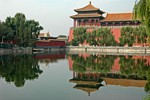 |
Main entrance (more)  |
Hall of Supreme Harmony 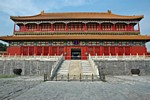 |
Inside the Hall of Supreme 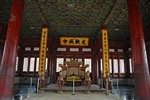 |
Rooftops near the ...  |
... Gate of Moral Standards 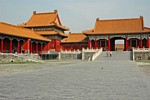 |
||
Hall of Central Harmony 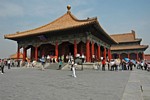 |
Hall of Preserving Harmony  |
||
Gate of Heavenly Purity 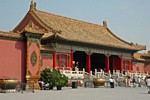 |
Palace of Heavenly Purity  |
 |
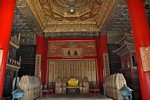 |
Gate of Heavenly Unity 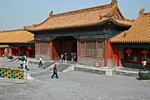 |
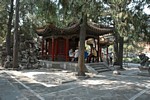 |
||
Palace of Earthly Tranquility 
|
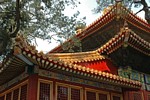 |
||
Hall of Accumulated 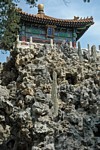 |
Passage along the outer  |
"Double Happiness"  |
Court Robe (more) 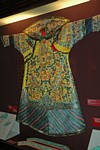 |
Rooftops (more) |
Embroidered silk 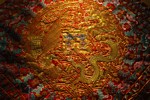 |
Court robe (more) 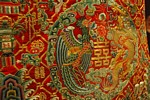 |
Bridal palanquin 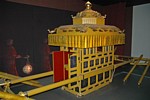 |
Diorama of dancing women 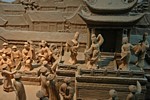 |
Gate of Distinguished Clan 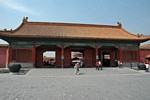 |
Gate to Palace of Peace and  |
Nine Dragon Wall detail 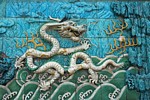 |
Palace of Peace and 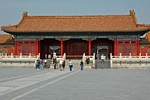 |
Hall of the Norms of  |
 |
 |
Hall of Character Cultivation  |
Hall of Joyful Longevity 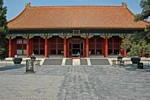 |
Hall of Harmony 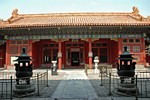 |
Well of Concubine Zhen  |
Designed in collaboration with Vitalect, Inc. All rights reserved. |









